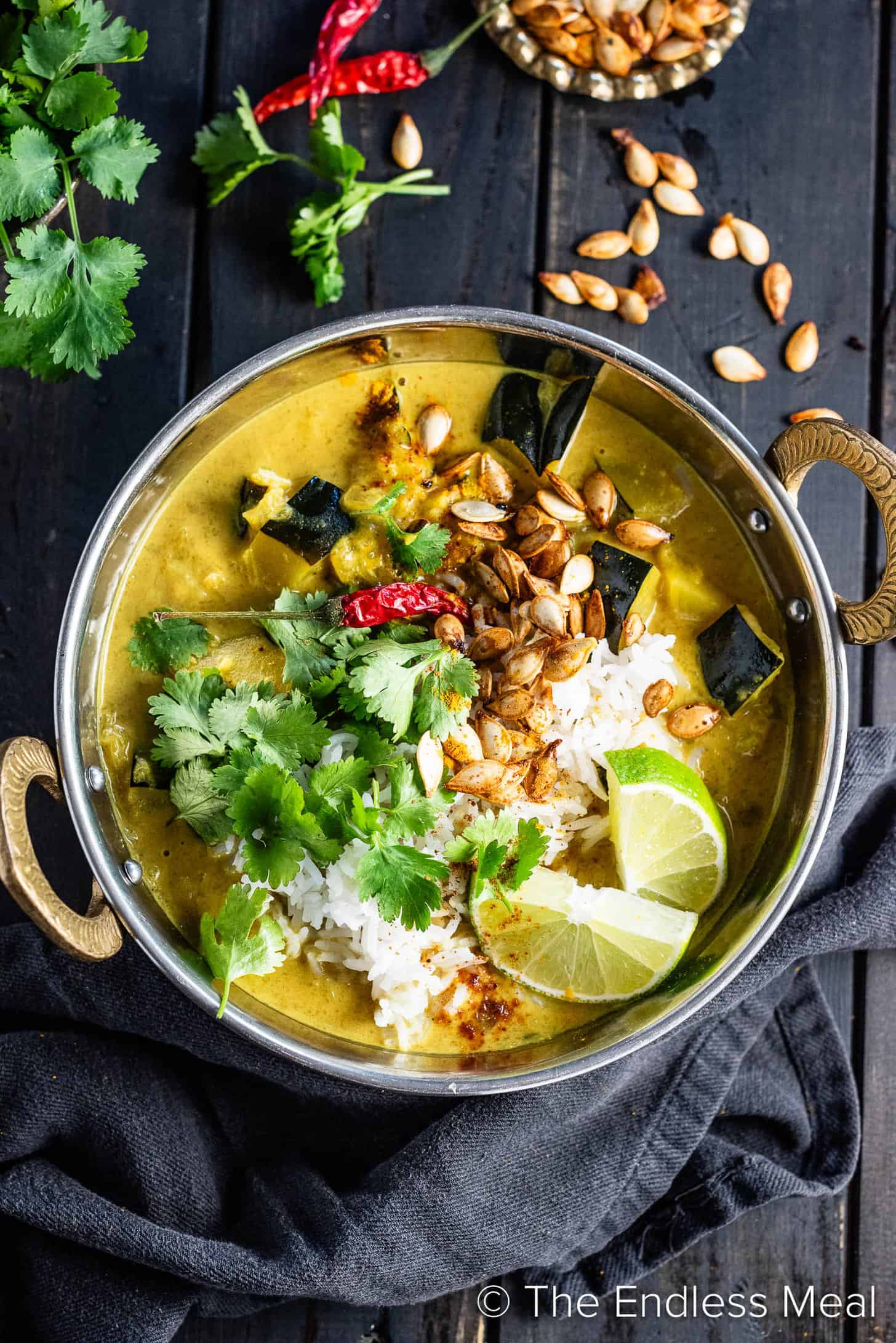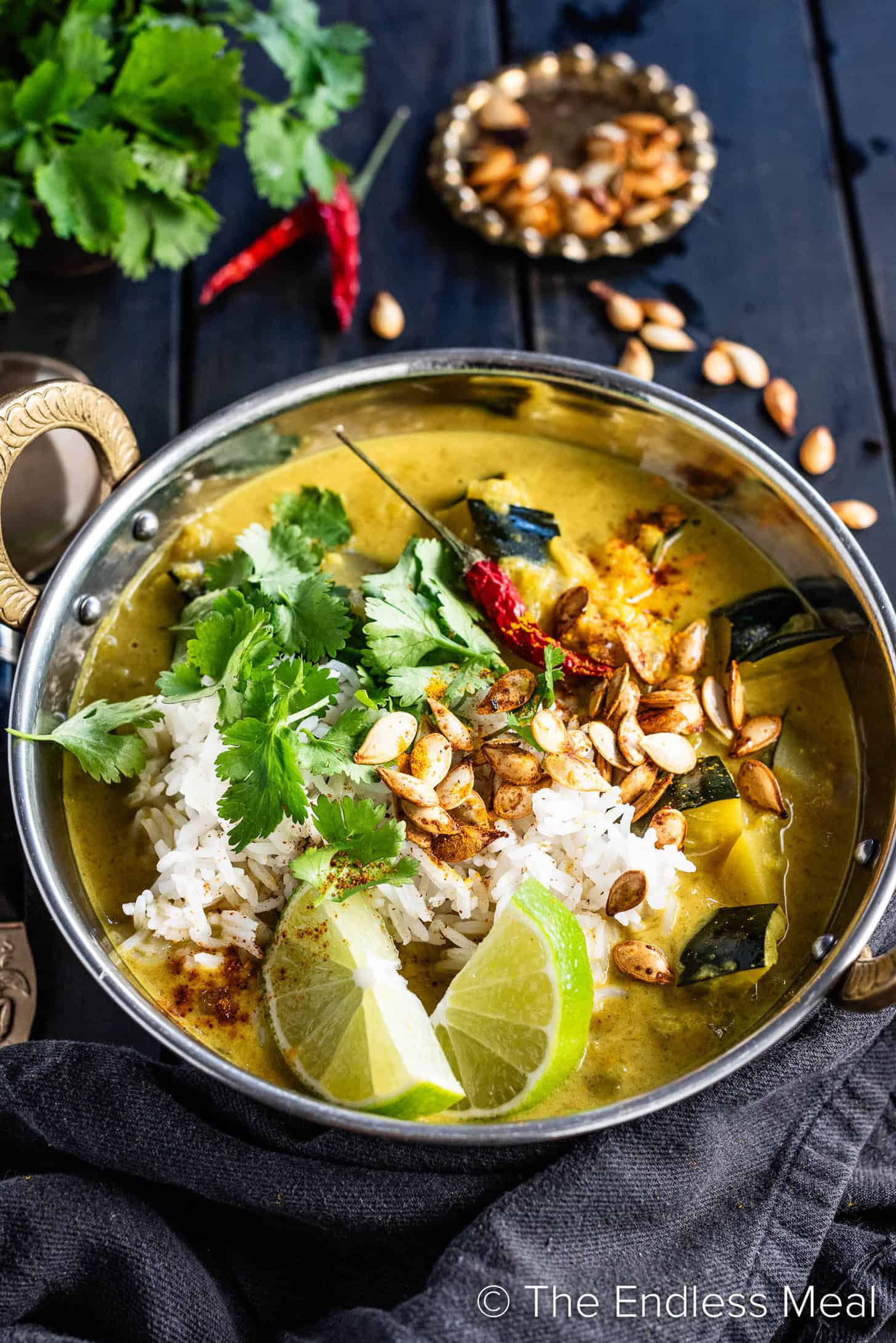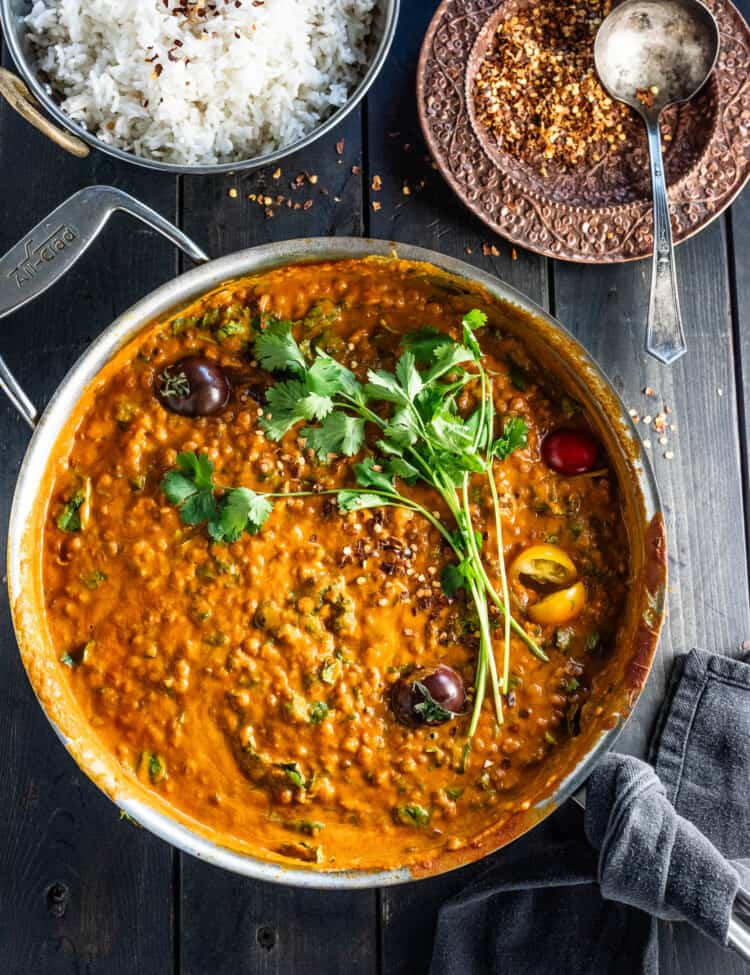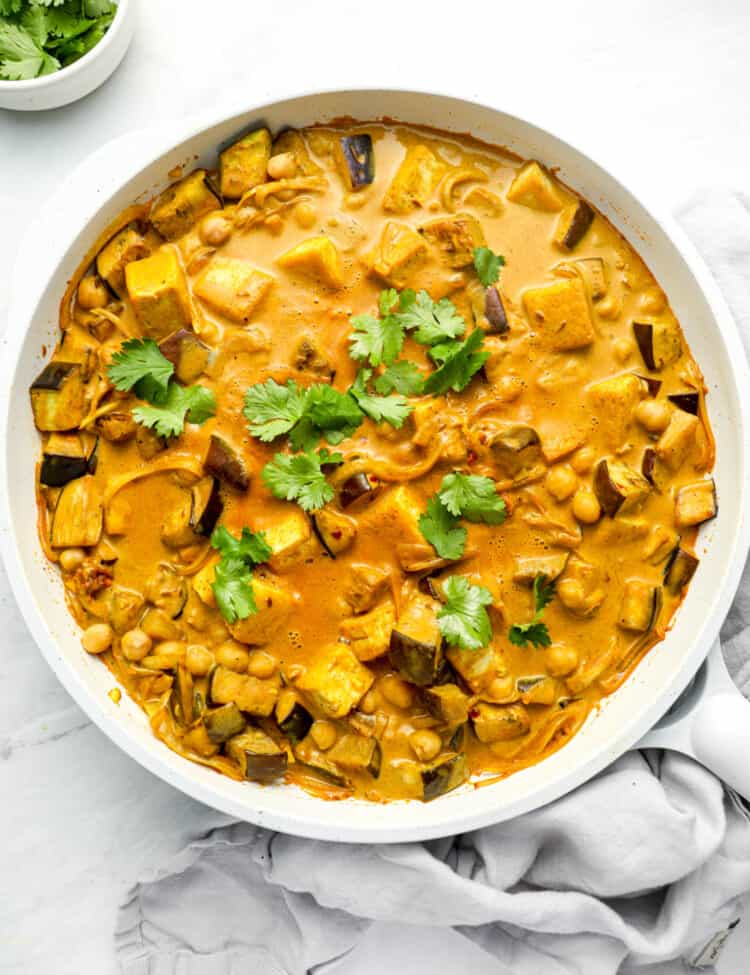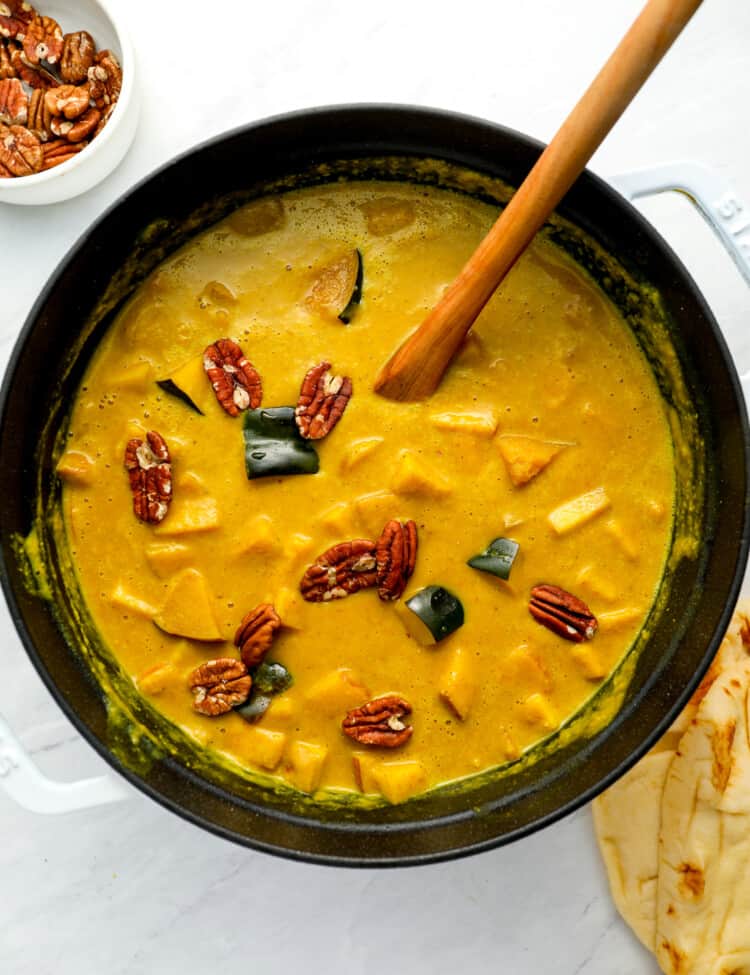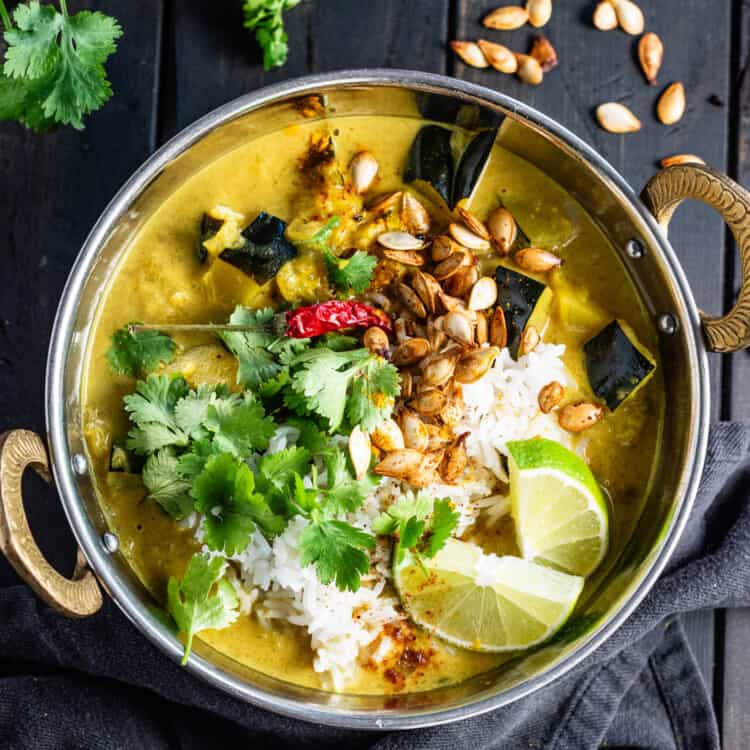For a versatile side dish with acorn squash, try this roasted acorn squash recipe. [convertkit form=1656505]
Acorn squash: Adds a rich, nutty sweetness. Coconut milk: The creamy base of the curry. Avocado oil: To sauté the onions. Tamarind pulp: Adds a tangy and slightly sweet flavor. Onion: Mince and sauté for a base to absorb the spices, ginger, and garlic. Aromatics: Fresh ginger and garlic add warmth and depth of flavor. Spices: Ground coriander, turmeric, cumin, fennel, and cayenne provide a well-balanced flavor profile. Stock or water: Helps to thin the curry to the desired consistency. Use vegetable broth for additional flavor. Sea salt: Enhance other flavors. Optional garnishes: Opt to add cilantro, lime, chilis, cayenne, or pumpkin seeds as garnishes.
Tamarind is a fruit that originated in Madagascar and has since spread to other parts of the world. The pulp is found in the pods of the fruit and has a sweet and tangy flavor. Depending on which tamarind you buy, you will find some have lots of seeds and others none at all. Many supermarkets carry it in the ethnic foods or spice sections. Otherwise, check Asian grocery stores, health food stores, or purchase it online.If you’re in a pinch, a squeeze of lime juice can add some tang, but does have a distinctly different flavor.
Dried fruits: A handful of raisins or dried apricots add natural sweetness. Curry base: Make it extra creamy by using coconut cream instead of coconut milk, or spoon in some nut butter to enhance the richness with a nutty undertone. Both almond or cashew butter work well. Additional vegetables: Bell peppers, zucchini, mushrooms, or spinach all blend in to this recipe. Spice blends: Adjust the spices as per your preferences, or experiment with other flavors – A touch of garam masala or curry powder add warmth. Protein: Marinate cubed tofu before adding it to the curry or cut cooked chicken to bite sized-pieces. Roasted chickpeas or cooked lentils also complement the recipe beautifully. To skin, or not to skin: The skin of acorn squash becomes soft when cooked, so it is not necessary to peel the acorn squash prior to cooking. It becomes tender enough to be eaten and adds a different texture to the rest of the squash. Plus, it is packed with nutrients. If you don’t love the texture and taste and your personal preference is to omit it, simply peel before cooking. Winter squash: Although this recipe is delicious with acorn squash, you could try another, such as pumpkin or butternut squash. Just be aware that cooking times may vary depending on the density of the squash.
Firmness: Gently press down on the acorn squash to check that it is firm and there are no soft spots. A mushy squash will be over-ripe. Color: Look for a dark green, deep orange, or combination of the colors. Skin: Blemishes, cuts, or cracks are often a sign of damage or disease. Ensure the skin is also matte rather than glossy, as a glossy sheen indicates it’s been treated with preservatives. Weight: Lift the squash to feel its weight – heavier squash have better chances of having more flesh, whereas lighter squash can have more membrane.
A simple side dish of roasted broccoli and carrots or a coconut sesame kale salad round out the meal. Make it a feast, add a coconut lentil curry and carrot noodles with peanut sauce to the table. For dessert, a hint of citrus can cut through the richness of the curry – try this delicious homemade coconut lemon ice cream or lemon lavender cake. Or, contrast the spice of the curry with something creamy and indulgent like this chocolate souffle or chocolate lava cake with salted caramel.
Did you make this?
We love to see what you made! Tag @theendlessmeal or hashtag #theendlessmeal!
